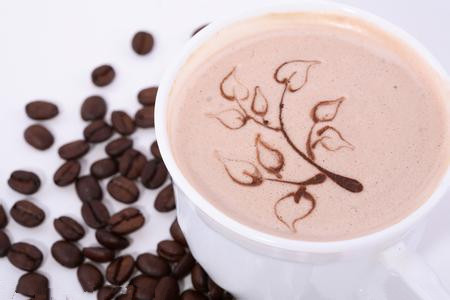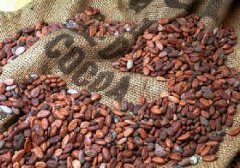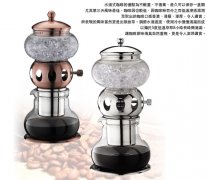North Italian baking "taste buds first" the combination of "ideal and fantasy"

Coffee knowledge starts with mixed beans.
When we talk about roasting espresso beans in coffee knowledge, we are actually talking about the science of mixed beans. The highest sweet spots of all kinds of coffee beans from different countries appear at different baking points, so bakers must find a balance between baking and mixing beans in order to make a good cup of espresso. This knowledge begins with the degree of baking and the selection of beans, as well as the baking master's own taste acuteness. If you give full play to these three key points, you will have a good chance to produce espresso with a balanced export feel and a pleasant flavor. Of course, there are many subjective taste views, but based on my personal experience over the years, I can give you some suggestions.
If you join a coffee chain, then in the joining training session, the teacher will focus on this area, using Northern Italian baking, the bean selection process is the key point, you must choose the coffee beans with the lowest acidity at this roasting degree. As far as my personal Northern Italian recipe is concerned, the Brazilian beans I use are the least sour of the 10 Brazilian ones. But if you go deeper, if you want to bake Italian formula, I probably don't need to think about the acidity. About 50% of Brazilian beans can meet this demand; if you want to use the deepest southern Italian baking, then every Brazilian can. Generally speaking, the Northern Italian recipe must use Arabica beans with mild flavor and low acidity. The classic formula is Mocha-Java, which combines Yemeni mocha and Java Arabica beans, but there is another popular and widely used alternative formula: Ethiopia Harar plus Sumatra manning Mandheling.
The choice of beans in Chinese and Italian formula is more flexible, but you may have to choose several beans with a strong style, such as Ethiopia Harar. Many beans with high acidity, such as Costa Rica and Kenya, reach their peak when baked in Chinese and Italian style.
Southern Italian baking is too deep, so you have to use a very strong recipe, usually rough and strong African beans are very suitable for this way, such as Burundi or Harar. Personally, I think that when you enter the baking degree as deep as FrenchRoast, you have a wide range of flexibility in choosing beans, because at this time, most of the qualities of coffee beans are baked off.
North Italian baking
In the relatively shallow baking of Northern Italian roasting (popular around Milan), it is a special representative of coffee culture, which produces a cup of espresso that tastes like sugar water. Personally, I think this kind of formula is the best combination of sweetness and baked drupe flavor, but it is the most likely to cause problems in the extraction stage. The Northern Italian formula has the greatest potential to produce sweet espresso, but it is easy to screw up during extraction. The thick and sweet dry aroma means that the flavor is the most complex and fragile, and the carbonization is relatively low. After many years of practical experience, I have found that the North Italian formula, its aromatic substances through the action of hot water, is the most fragile, if the extraction is not handled properly, it will change, it should be a sweet smell of espresso, may become too sour / too bitter or astringent.
Because the coffee beans of Northern Italian formula are less carbonated, their caramel flavor and flavor characteristics account for a high proportion. It is a great challenge to retain these rich characteristics during cooking, especially in the stability of cooking water temperature. If the cooking water temperature changes too much [up and down more than four degrees Fahrenheit], the caramel flavor will be the first to be sacrificed. Then came the dull yellowish crema outflow. If the temperature of the cooking water is stable [below 2 degrees Fahrenheit], crema will show ochre red. But the ochre red crema does not mean that the caramel flavor can survive after brewing, even at a very stable temperature, it is often sour espresso, when the water temperature may be low. (at sea level, the ideal cooking water temperature is 204 degrees Fahrenheit, the measuring point is near the coffee cake). I found that the sweeter the espresso, the easier it is to disperse their crema.
The bar staff must be very skilled in order to correctly cook the North Italian formula. If there is any error in cooking or filling, resulting in the "channel" effect, the water flows quickly through this crack, the sweet molecules are destroyed, and the composition of the whole aromatic compound flowing into the cup is out of balance. Finally, the whole cup of espresso is occupied by astringency. In addition, the bar staff must also be careful not to put the espresso for too long. The cooked espresso must be mixed with milk as soon as possible. When making cappuccino, the sweet molecule of espresso is one of the important ingredients to form foam, but this ingredient will soon fade, and ceramic cups must also be preheated to preserve the espresso structure.
One of the keys to getting this seductive sweetness is the flow rate. To deal with this variable, the bar player must first carefully adjust the grinding scale. If the flow rate is too fast, it will be sour and astringent, and if the flow rate is too slow, it will be scorched and bitter. The goal of our store is to extract for 25 seconds, and the state of flow must be like a "mouse tail".
It may take years to cook a cup of Northern Italian espresso, but if you end up in a neighborhood where more customers like the taste, your business may be much better than other ripe bean retailers in the same community. However, if your goal is to open any type of chain store, do not choose this kind of northern Italian baking, practice cooking and try to fail a lot of times, you might as well choose a deeper baking formula, customers are more acceptable. The Northern Italian recipe is more suitable for baking retailers who aspire to the craftsman level to sell. A talented coffee lover who has a great passion for coffee will be fascinated by the successful espresso of this Northern Italian recipe. Once you have successfully mastered the main points of the Northern Italian recipe, then you are almost unrivalled in the industry.
Important Notice :
前街咖啡 FrontStreet Coffee has moved to new addredd:
FrontStreet Coffee Address: 315,Donghua East Road,GuangZhou
Tel:020 38364473
- Prev

Hand-brewed coffee introduces the brewing method of coffee flannel filter
The coffee washed out by the flannel filter is delicious and ideal. The advantage of using flannel filter is that without stirring the coffee in the bag, all the coffee can be exposed to boiling water. After expansion, the coffee will foam and gradually filter down. The key point is to determine the amount of coffee powder, and then to determine the amount of boiling water. When brewing, when the injected boiling water stays in the filter
- Next

A way of making coffee drinks.
Ice drop coffee, also known as water drop coffee, ice brewed coffee, is a way to make coffee drinks. Ice drop coffee originated in Europe, because the coffee distiller was invented by the Dutch, so some people call it DUTCH COFFEE, espresso or water drop coffee. Ice drop coffee uses ice water, cold water or ice cubes to extract coffee, which is very slow and often takes hours.
Related
- Beginners will see the "Coffee pull flower" guide!
- What is the difference between ice blog purified milk and ordinary milk coffee?
- Why is the Philippines the largest producer of crops in Liberia?
- For coffee extraction, should the fine powder be retained?
- How does extracted espresso fill pressed powder? How much strength does it take to press the powder?
- How to make jasmine cold extract coffee? Is the jasmine + latte good?
- Will this little toy really make the coffee taste better? How does Lily Drip affect coffee extraction?
- Will the action of slapping the filter cup also affect coffee extraction?
- What's the difference between powder-to-water ratio and powder-to-liquid ratio?
- What is the Ethiopian local species? What does it have to do with Heirloom native species?

